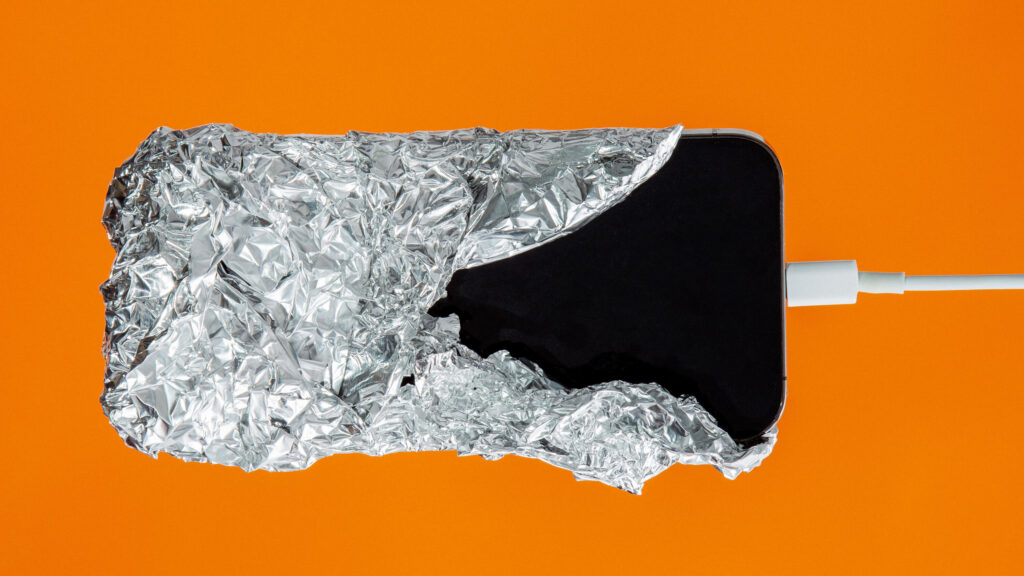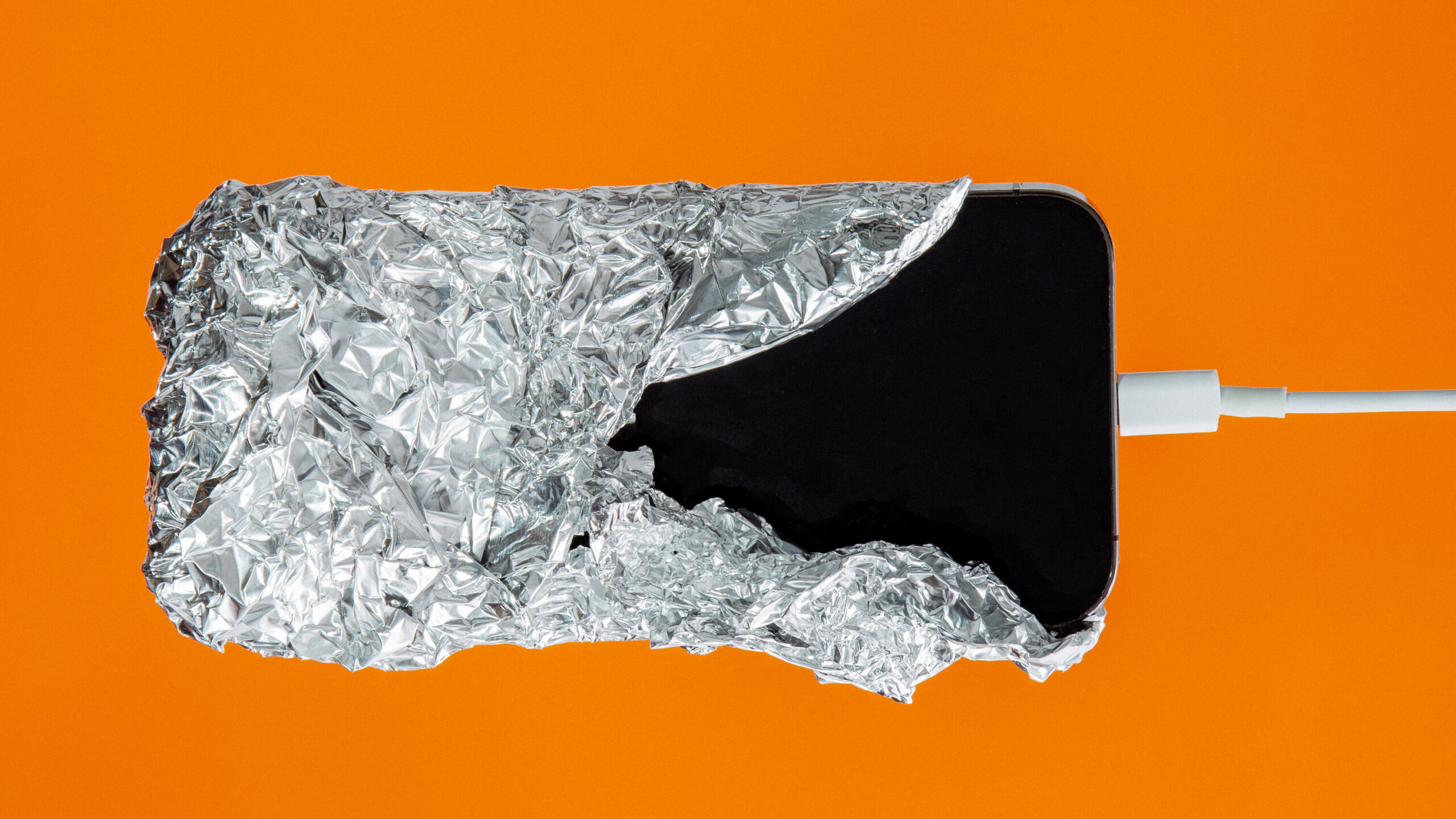
Cancer From Phone Radiation: Unveiling the Truth and Separating Fact from Fiction
The question of whether cell phone radiation causes cancer has been a subject of ongoing debate and scientific investigation for decades. With the ubiquitous nature of mobile phones in modern society, concerns about potential health risks, particularly the development of cancer, are understandable. This article aims to provide a comprehensive, fact-checked overview of the current scientific understanding of the link between cell phone radiation and cancer, separating established facts from common misconceptions. We’ll delve into the types of radiation emitted by phones, the research conducted, and the recommendations from health organizations worldwide regarding cell phone usage and safety.
Understanding Cell Phone Radiation
Cell phones communicate using radiofrequency (RF) radiation, a form of electromagnetic radiation. RF radiation sits on the non-ionizing end of the electromagnetic spectrum, meaning it doesn’t have enough energy to directly damage DNA, unlike ionizing radiation such as X-rays or gamma rays. However, this does not automatically negate potential biological effects.
The primary way RF radiation from cell phones affects the body is through heating. When the body absorbs RF energy, it can cause a slight increase in temperature in the tissues closest to the phone. This is why you might feel your ear warm after a long phone call. The specific absorption rate (SAR) is a measure of the rate at which energy is absorbed by the human body when exposed to RF radiation. Regulatory bodies like the Federal Communications Commission (FCC) in the United States and similar organizations globally set limits for SAR values to ensure phones are safe for use.
The Research Landscape: What the Studies Say
Numerous studies have investigated the potential link between cell phone radiation and cancer. These studies can be broadly categorized into two types: epidemiological studies and laboratory studies.
Epidemiological Studies
Epidemiological studies examine patterns of disease in populations and look for associations between exposure to certain factors (like cell phone use) and the risk of developing cancer. Some notable epidemiological studies include:
- Interphone Study: This large, multinational study, coordinated by the International Agency for Research on Cancer (IARC), investigated the relationship between cell phone use and several types of brain tumors. While some findings suggested a possible increased risk of glioma (a type of brain cancer) among the heaviest users of cell phones, the study had limitations, including recall bias (people with cancer may be more likely to remember and report their cell phone use differently than those without cancer).
- Million Women Study: This UK-based study followed a large cohort of women for several years and found no statistically significant association between cell phone use and the risk of brain tumors.
- Cohort Study of Mobile Phone Use and Health (COSMOS): This ongoing prospective cohort study is following a large group of cell phone users over several decades to assess the long-term health effects of cell phone use. Results are still pending.
The overall findings from epidemiological studies have been inconsistent. Some studies have suggested a possible association between long-term, heavy cell phone use and certain types of brain tumors, while others have found no such association. These inconsistencies make it difficult to draw definitive conclusions.
Laboratory Studies
Laboratory studies investigate the effects of cell phone radiation on cells and animals. These studies can help researchers understand the biological mechanisms by which RF radiation might affect the body.
- National Toxicology Program (NTP) Study: This large and comprehensive study conducted by the U.S. National Toxicology Program found some evidence of an increased incidence of heart schwannomas (a type of tumor affecting nerve tissue in the heart) in male rats exposed to high levels of RF radiation similar to that emitted by cell phones. The study also found some evidence of gliomas in male rats. However, the relevance of these findings to humans is uncertain, as the rats were exposed to much higher levels of radiation than humans typically experience from cell phone use, and the effects were not consistently observed across different species and sexes.
- Ramazzini Institute Study: This Italian study found an increased incidence of heart schwannomas in rats exposed to RF radiation. The study used lower levels of radiation than the NTP study, which some researchers believe makes the findings more relevant to human exposure. However, the study has also been criticized for methodological issues.
While some laboratory studies have shown potential biological effects of cell phone radiation, the results are not always consistent, and the relevance to human health remains unclear. More research is needed to understand the mechanisms by which RF radiation might affect the body and to determine whether these effects pose a significant risk to humans.
The IARC Classification of RF Radiation
In 2011, the International Agency for Research on Cancer (IARC) classified RF radiation as a Group 2B carcinogen, meaning it is “possibly carcinogenic to humans.” This classification was based on limited evidence from epidemiological studies suggesting a possible association between cell phone use and glioma and acoustic neuroma (another type of brain tumor). Group 2B also includes substances like coffee and pickled vegetables. It’s important to note that this classification does not mean that RF radiation definitely causes cancer, but rather that there is some evidence to suggest a possible risk, but the evidence is not strong enough to draw firm conclusions. The classification of radiofrequency radiation and the potential for cancer from phone radiation is still being studied. The classification of cancer from phone radiation remains a topic of debate.
What Health Organizations Recommend
Given the uncertainty surrounding the potential health effects of cell phone radiation, many health organizations offer recommendations for reducing exposure. These recommendations are generally based on the precautionary principle, which suggests taking reasonable steps to minimize potential risks even when the scientific evidence is not conclusive.
Some common recommendations include:
- Use a Headset or Speakerphone: Using a headset or speakerphone allows you to keep the cell phone away from your head, reducing the amount of RF radiation exposure to your brain.
- Text Instead of Calling: Texting also helps to keep the phone away from your head.
- Limit Call Time: Reducing the amount of time you spend on the phone can reduce your overall exposure to RF radiation.
- Choose Phones with Lower SAR Values: SAR values are a measure of the amount of RF energy absorbed by the body. Phones with lower SAR values expose you to less radiation. You can find SAR values for different phones on the manufacturer’s website or in product information.
- Keep Your Phone Away From Your Body: When you’re not using your phone, keep it in a bag or purse rather than in your pocket.
- Be Aware of Signal Strength: Cell phones emit more RF radiation when the signal is weak. Avoid using your phone in areas with poor reception.
Separating Fact from Fiction: Common Misconceptions
There are many misconceptions surrounding cell phone radiation and cancer. It’s important to be aware of these misconceptions and to rely on credible sources of information.
- Misconception: All cell phone radiation is dangerous.
Fact: Cell phones emit non-ionizing radiation, which is less energetic than ionizing radiation and is not known to directly damage DNA. - Misconception: There is definitive proof that cell phone radiation causes cancer.
Fact: The scientific evidence on the link between cell phone radiation and cancer is mixed. Some studies have suggested a possible association, while others have found no such association. More research is needed to draw definitive conclusions. - Misconception: 5G technology is more dangerous than previous generations of cell phone technology.
Fact: 5G technology uses higher frequencies than previous generations of cell phone technology, but it still falls within the non-ionizing range of the electromagnetic spectrum. Current scientific evidence does not suggest that 5G technology poses a greater health risk than previous generations of cell phone technology.
The Future of Research
Research on the potential health effects of cell phone radiation is ongoing. Scientists are continuing to investigate the biological mechanisms by which RF radiation might affect the body and to conduct large-scale epidemiological studies to assess the long-term health effects of cell phone use. Future research may focus on:
- Identifying subgroups of people who may be more susceptible to the effects of cell phone radiation.
- Investigating the effects of cell phone radiation on children and adolescents, whose brains are still developing.
- Developing new technologies that reduce exposure to RF radiation.
Conclusion: Navigating the Uncertainty
The question of whether cancer from phone radiation is a genuine threat remains a complex and evolving issue. While some studies have raised concerns about a possible association between long-term, heavy cell phone use and certain types of brain tumors, the overall scientific evidence is inconclusive. Health organizations generally recommend taking precautionary measures to reduce exposure to RF radiation, such as using a headset or speakerphone, limiting call time, and keeping the phone away from the body. It is crucial to stay informed about the latest research findings and to rely on credible sources of information to make informed decisions about cell phone use. Understanding the debate surrounding cancer from phone radiation requires critical analysis.
Ultimately, the decision of how to manage your cell phone usage is a personal one. By understanding the current scientific evidence and taking reasonable precautions, you can minimize your potential exposure to RF radiation and reduce any potential health risks. The potential for cancer from phone radiation is a serious concern that requires ongoing research and public awareness. The debate surrounding cancer from phone radiation highlights the need for continued scientific investigation. Concerns about cancer from phone radiation are understandable given the widespread use of mobile phones. The potential link between cancer from phone radiation is a topic of ongoing research. Many people worry about the possibility of cancer from phone radiation. Studies continue to investigate the risk of cancer from phone radiation. The question of whether cancer from phone radiation is a real threat is still debated. Scientists are working to understand if there is a connection between cancer from phone radiation. Public awareness about the potential for cancer from phone radiation is important. Further investigation is needed to determine the true risk of cancer from phone radiation. The fear of cancer from phone radiation is a common concern in modern society. [See also: Cell Phone Safety Tips] [See also: Understanding Electromagnetic Fields] [See also: The Impact of 5G on Health]

